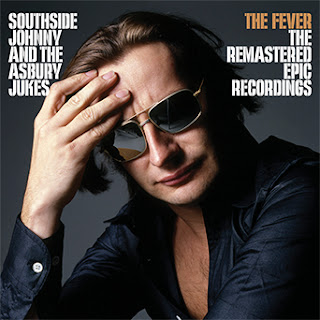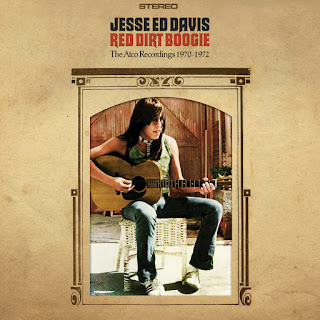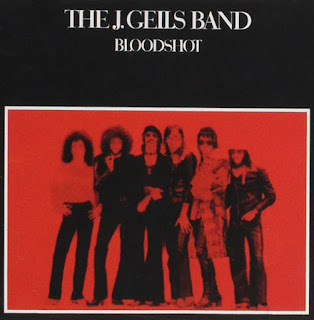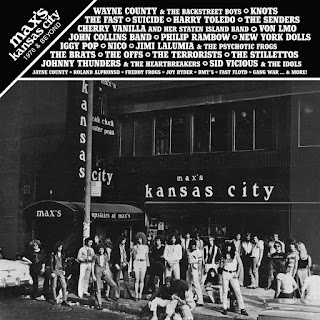Record Store Day 2017 is a mere three weeks away, falling on Saturday, April 22nd this year. As usual, both independent and major labels are flooding the market with a bunch of slick, shiny (and high-priced) vinyl relics designed to separate record collectors from their hard-earned pesos.
We’d be remiss if we didn’t offer some sort of preview of the holiday, so after poring over the massive RSD17 release list, the Reverend has personally ‘curated’ the below listed discs as those most likely to tickle the itch of any That Devil Music reader. Remember – ‘round these parts, every day is “record store day”! Support your local independent music retailer…
The list below is organized alphabetically by artist, with the size of the release (one disc, two, etc) and the number of copies of each limited edition LP (5000x, etc) included.
•
David Bowie – Cracked Actor (3xLP, 5000x)
Rhino Records dug deep into the vaults to find this previously unreleased live recording from David Bowie’s
Diamond Dogs tour in September 1974. The album’s title comes from a 1975 BBC television documentary film that followed Bowie during his series of concerts in Los Angeles. Whereas the producers of the film used concert footage from the September 2nd, 1974 performance,
Cracked Actor the album uses a recording from September 5th and was produced by Bowie before his death and mixed by Tony Visconti. The three-album vinyl set features etching on the sixth side.
•
R.L. Burnside – Long Distance Call (LP, 2500x)
Reissue of 1982 recordings made in Groningen, Netherlands by producer Leo Bruin (founder of Swingmaster Records) and originally released on CD stateside by Fat Possum in 2000 as
Mississippi Hill Country Blues. A stunning solo performance by legendary bluesman R.L. Burnside – just the man and his guitar – this is the first time these eleven sides have been offered on vinyl in the U.S.
•
Marianne Faithful – Rich Kid Blues (LP, 2000x)
Recorded in 1971 and originally released in the U.K. on CD by Diablo Records in 1998 (and again in 2003), Marianne Faithful’s
Rich Kid Blues reunites the singer with producer Mike Leander, who had arranged and recorded much of Faithful’s 1960s-era material for the Decca Records label. A low-budget affair, the album offers Faithful’s haunting acoustic readings of folk-rock songs by artists like Bob Dylan, Phil Ochs, James Taylor, Sandy Denny, and Tim Hardin, among others. This is the first time on vinyl for
Rich Kid Blues.
•
Hawkwind – The Best of the United Artists Years: 1971-1974 (LP, 2500x)
There is certainly no lack of Hawkwind material to be found on the band’s early recordings and half-dozen (or more) compilation CDs that have been culled from the Hawk’s prolific and productive stint with United Artists Records circa 1971 to ’74. This eight-track LP offers up some of the best recordings from the psychedelic space-rock pioneers, including rare and alternative versions of songs from their studio albums like a live 1971 performance of the classic “Silver Machine” from the Roundhouse. This limited edition RSD release is pressed on swirl color vinyl and was manufactured by Pallas Group in Germany on audiophile-grade vinyl.
•
Jimi Hendrix/Curtis Knight – Live At George’s Club 20 (2xLP, 3000x)
First legit vinyl release collecting raw live performances by the rock guitar great with bandleader Curtis Knight, recorded in December 1965 and January 1966, not long before Hendrix’s discovery by Animals bassist Chas Chandler.
Live At George’s Club 20 offers up raucous R&B and blues covers of classic songs by Muddy Waters, Jimmy Reed, Ray Charles, and others. A lot of this material was previously released by dodgy fly-by-night labels through the years, usually by Knight himself, but this specially priced two-disc set is offered by Dagger Records, the official bootleg label created by the Hendrix estate and restored by producer Eddie Kramer to their original status.
•
Robert Johnson – The Complete Recordings: The Centennial Collection (3xLP, 2500x)
Delta blues legend Robert Johnson only made a total of 42 recordings during two sessions in 1936 and ’37, but they have been circulated endlessly over the past 50+ years, providing a blueprint for contemporary blues and blues-rock music. These influential, inspiring tracks have been recycled more than once, most recently on the centennial of Johnson’s birthday in 2011, when they were re-mastered and reissued on CD (and thumb drive!). This three-album limited edition set is drawn from those improved 2011 recordings and packaged in a deluxe gatefold jacket and includes extensive liner notes as well as a bonus poster with the original label artwork of Johnson’s 78rpm singles released in the 1930s and ‘40s by labels like Vocalion, Orion, Conqueror, and others.
•
Ken Kesey – The Acid Test (LP, 2000x)
Writer and ‘60s counterculture icon Ken Kesey was, perhaps, the best-known of the loose-knit group of friends called the Merry Pranksters whose experimentation with psychedelic drugs like LSD were immortalized in Tom Wolfe’s 1968 book
The Electric Kool-Aid Acid Test. The 1966 album
The Acid Trip was a private label release that was intended to recreate the vibe of an LSD trip for listeners. Allegedly Kesey, Ken Babbs, and other Merry Pranksters were tripping in the studio with members of the Grateful Dead and came up with this cultural curiosity, roughly 30 minutes of humorous spoken word, music parody, and rambling instrumental jams that probably made a lot of sense at the time.
•
Motörhead – Clean Your Clock (2xLP, 1500x)
Lemmy may have left the planet in December 2015 but his music is eternal.
Clean Your Clock is being billed as a ‘RSD exclusive’ but that’s stretching it a bit. Recorded live at the Zenith in Munich, Germany during Motörhead’s 2015 “Bad Magic Tour,” this performance was released on CD, DVD, and vinyl in 2016. This RSD release is a two-LP picture disc set, though, which is pretty cool in and of itself.
•
Iggy Pop – Post Pop Depression: Live at the Royal Albert Hall (3xLP, 1200x)
Prior to the great David Bowie’s death in January 2016, his friend and fellow rock ‘n’ roll legend Iggy Pop revisited the music the two of them had made back in the late ‘70s with a live performance at the Royal Albert Hall in London. Backed by a band that included Josh Homme and Dean Fertitia of Queens of the Stone Age and Arctic Monkeys’ drummer Matt Helders, Pop performed songs from albums like The Idiot and Lust For Life. This RSD ‘exclusive’ seems to be an expanded version of the 2016 CD and DVD release, packaged in a four-sleeve, book-style individually-numbered gatefold with a sixteen-page book featuring exclusive photos.
•
Lou Reed – Perfect Night: Live In London (2xLP, 3000x)
A semi-acoustic live album recorded by Reed during the Meltdown ’97 festival in London, England and originally released on CD in 1998,
Perfect Night gets its first vinyl reissue for Record Store Day. Reed performs a stellar set, including a version of the Velvet Underground’s “I’ll Be Your Mirror,” originally sung by Nico, as well as solo material like “Coney Island Baby,” “New Sensations,” and the awesome title track.
•
John Sinclair – Mobile Homeland (LP, 1200x)
Blues artist, poet, political activist, and 1960s-era cultural hero John Sinclair released Mobile Homeland on CD in 2016, so this is essentially the vinyl reissue of the collection of Sinclair’s beat poems set to music and produced by Tino Gross at Funky D Records in Detroit.
•
Sun Ra – Janus (LP, 2000x)
Reissue of space-jazz innovator Sun Ra’s 1999 compilation CD features recordings dating from 1963 to 1970 that includes both studio tracks and wild live performances. I haven’t heard this one, but informed sources tell the Reverend that while it’s not a great introduction to the almighty Mr. Ra, it’s a “must have” disc for the hardcore faithful.
•
Peter Tosh – Legalize It! (LP, 2000x)
Vinyl reissue of reggae great Peter Tosh’s 1976 debut album features the former Wailers member’s awesome title track as well as songs like “Why Must I Cry” (written with Bob Marley) and the original “Ketchy Shuby.”
•
John Trudell – AKA Graffiti Man (2xLP, 2000x)
Reissue of the American Indian activist and poet’s 1992 sophomore album features Trudell’s erudite spoken-word pieces set to a rock ‘n’ roll soundtrack with elements of indigenous folk music. Several songs were co-written by Jesse Ed Davis and tracks like “Rockin’ the Res,” “Baby Boom Che,” and the title song earned the artist a truckload of critical acclaim back in the wild ‘n’ wooly alternative 1990s.
•
Towns Van Zandt – Live at Austin City Limits (LP, 2500x)
The late Texas-bred songwriting legend was inducted into the
Austin City Limits ‘Hall of Fame’ in 2015 and this RSD exclusive release features Van Zandt’s 1976 appearance on the long-running TV show, performing country-tinged folk-blues songs like “Dollar Bill Blues,” “Talkin’ Karate Blues,” “The Ballad of Ira Hayes,” and “Fraternity Blues.” Highly recommended if you like eloquent songwriting and haunting solo performances.
•
Link Wray – Beans and Fatback (LP, 2400x)
Guitar great Link Wray is best-known for his enduring classic 1958 instrumental “Rumble,” which inspired a rash of U.K. fretburners like Eric Clapton, Peter Townshend, Jeff Beck, and Jimmy Page. By the late ‘60s, though, Wray was an afterthought in a market flush with blues-drenched rockers.
Beans and Fatback, recorded at the same time as the guitarist’s self-titled 1971 “comeback” album, was released in 1973 to critical acclaim. A raucous collection of hard-rockin’, whiskey-soaked songs recorded in a chicken coup, the album led to the pairing of Wray and rockabilly revivalist Robert Gordon for a series of late ‘70s LPs.
Record Store Day 2017 also offers up a bunch of interesting 7” and 10” releases along with the above-listed full-length albums, including discs from Steve Earle, the Drive-By Truckers, the Old 97s, the Kinks, Patti Smith, the Zombies, and Sharon Jones & the Daptones, among many others. Check out the entire list on the
Record Store Day website and get your pennies ready to spend on April 22nd!






































